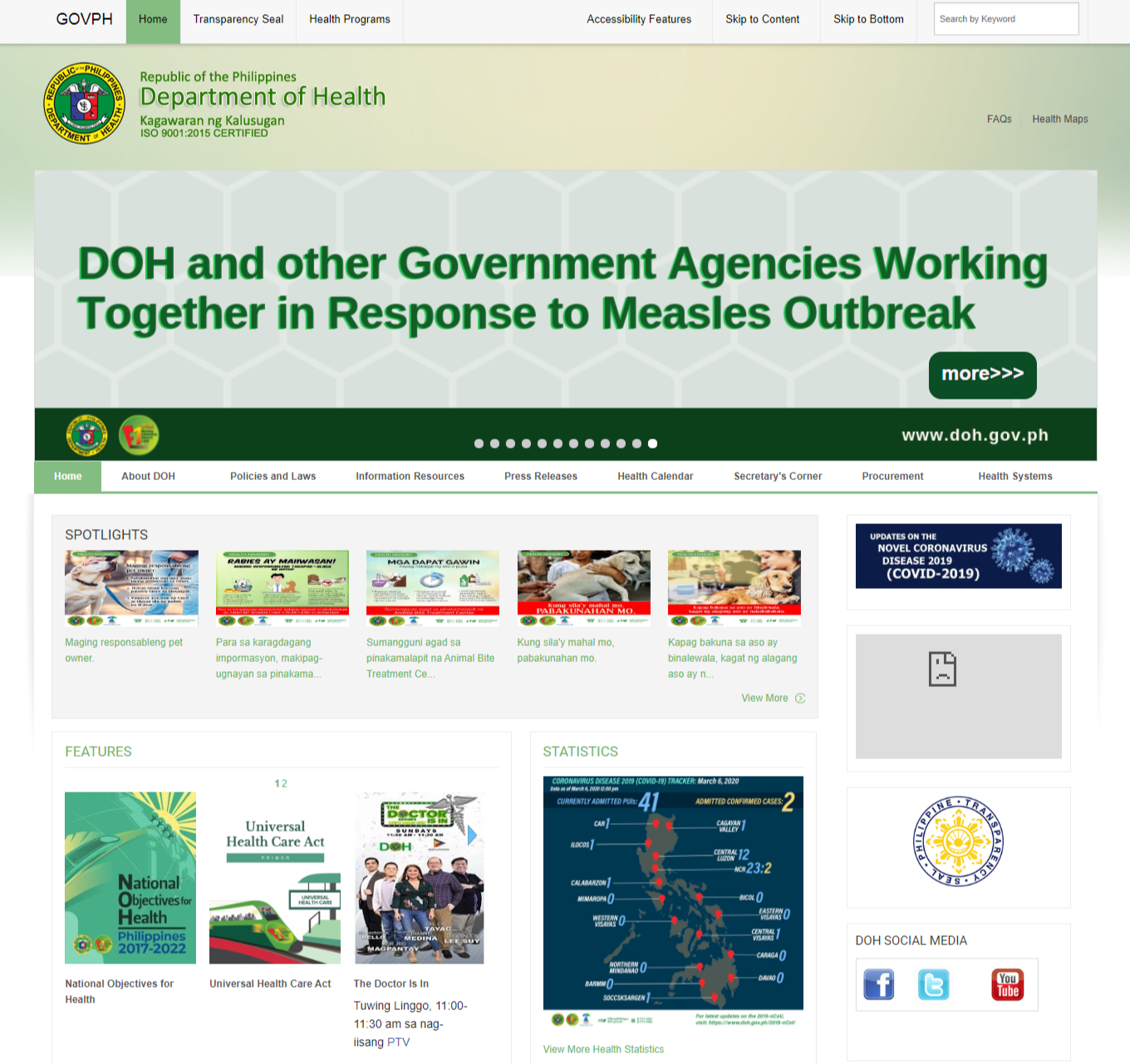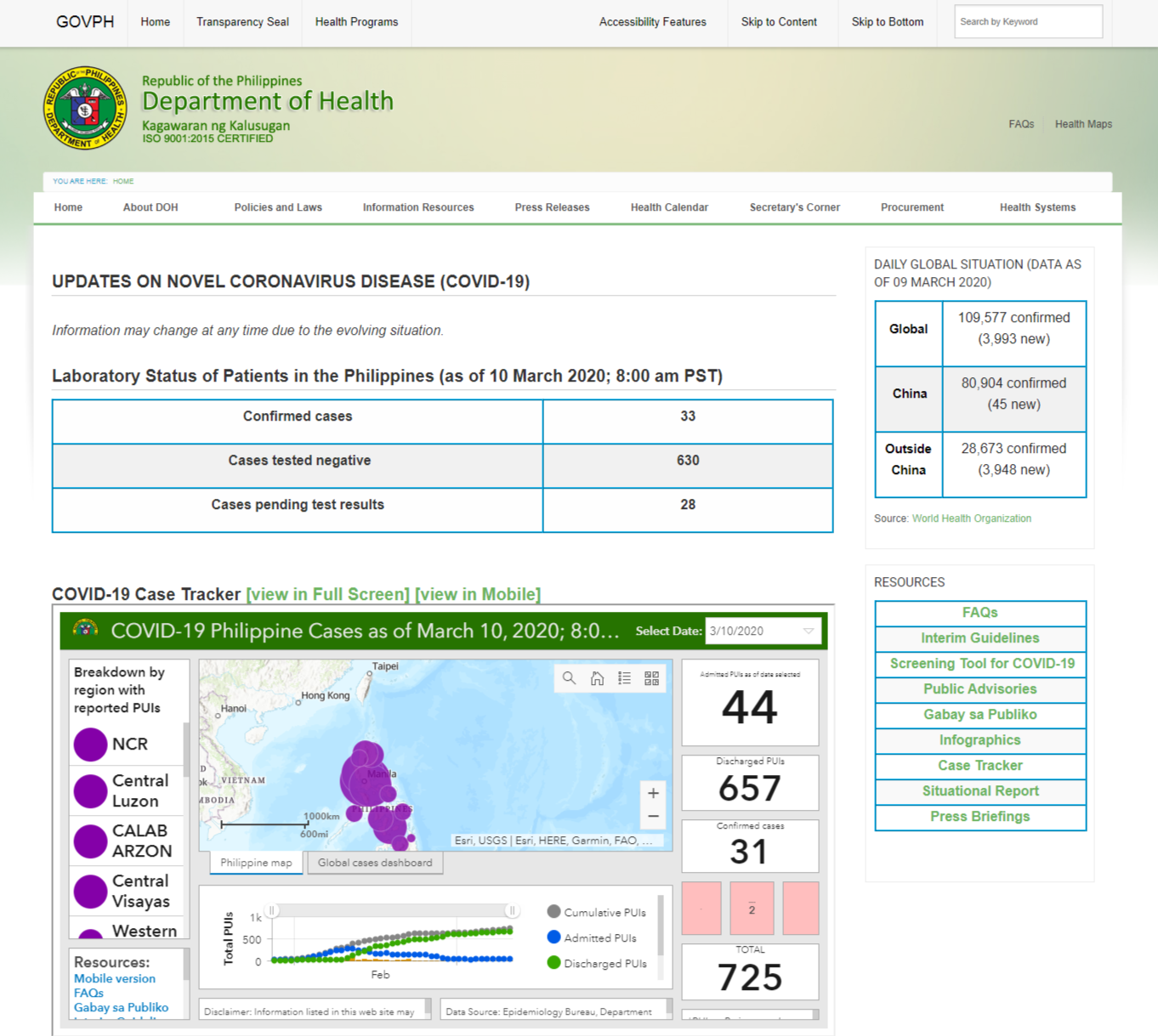The Department of Health’s website and live case tracker dedicated to the novel coronavirus cases appeared to have errors following the surge of confirmed COVID-19 cases that were reported on Tuesday, March 10.
As of publication, the DOH reported 49 new confirmed cases of COVID-19, a huge increase after nearly a month of only detecting three cases.
Some Filipinos online noticed that the website went down after the announcement of new cases.
A reporter shared a screenshot of the website’s status on Twitter at 3:48 p.m. on Tuesday.
Awow. pic.twitter.com/OEcGC503H5
— ᴠɪɴᴄᴇ ғ. ɴᴏɴᴀᴛᴏ (@VinceNonato) March 10, 2020
Interaksyon’s verification of the website on Wednesday morning showed that the DOH’s homepage was already working.

Its live tracker, however, is still having issues.

DOH’s COVID-19 case tracker features the number of confirmed cases, cases that tested negative and cases that are yet to be confirmed.
It also has a breakdown by region of the reported persons under investigation (PUIs) and an interactive map that shows you these locations.
The page also releases updates on the total number of cases in China, where the virus originated; outside of China, and globally.
The health agency’s statements and pronouncements are archived in the lower part of the page.
Why websites get bogged down
Even the largest websites such as social networking apps experience errors or crash every now and then.
There are several reasons for this, according to Uptime, a website monitoring service.
Uptime listed eight common causes:
- Sharp increases in traffic or people viewing the website
- Expired domain account
- Unreliable service provider
- Being attacked by hackers
- Blacklisted by Google
- DNS errors
- Coding issues
- Plugin Issue
Uptime noted that these errors are normal and can easily be remedied.
“Website crashes are nothing new. We’ve seen some of the web’s biggest websites break. Outages are inevitable. But prolonged outages are not necessary,” the blog said.
When Instagram, Facebook and WhatsApp crashed at the same time in 2019, Facebook cited a server configuration change as the cause of one of the longest and largest online outage in recent years.
“Yesterday, as a result of a server configuration change, many people had trouble accessing our apps and services. We’ve now resolved the issues and our systems are recovering. We’re very sorry for the inconvenience and appreciate everyone’s patience,” the social media giant said back then.
The health agency did not explain why their website and live tracker was experiencing errors at a time when Filipinos needed the data the most.
However, given the duration, the DOH’s web developers likely could not catch up with the surge in web traffic as users looked up information on the latest coronavirus cases in the country.










